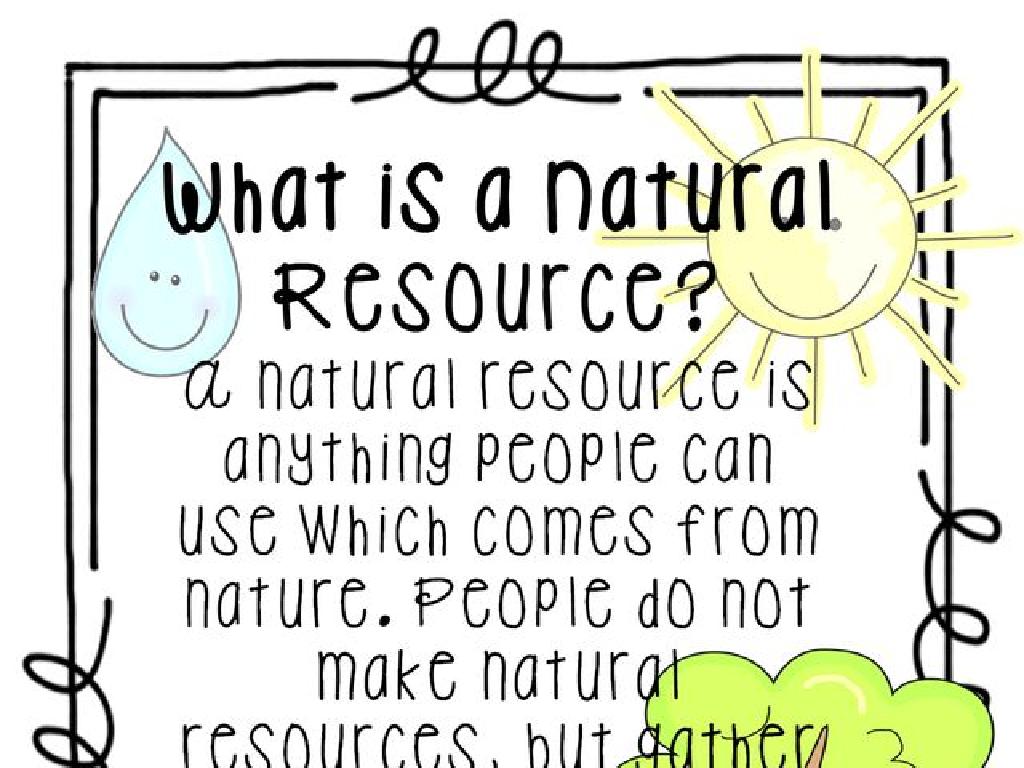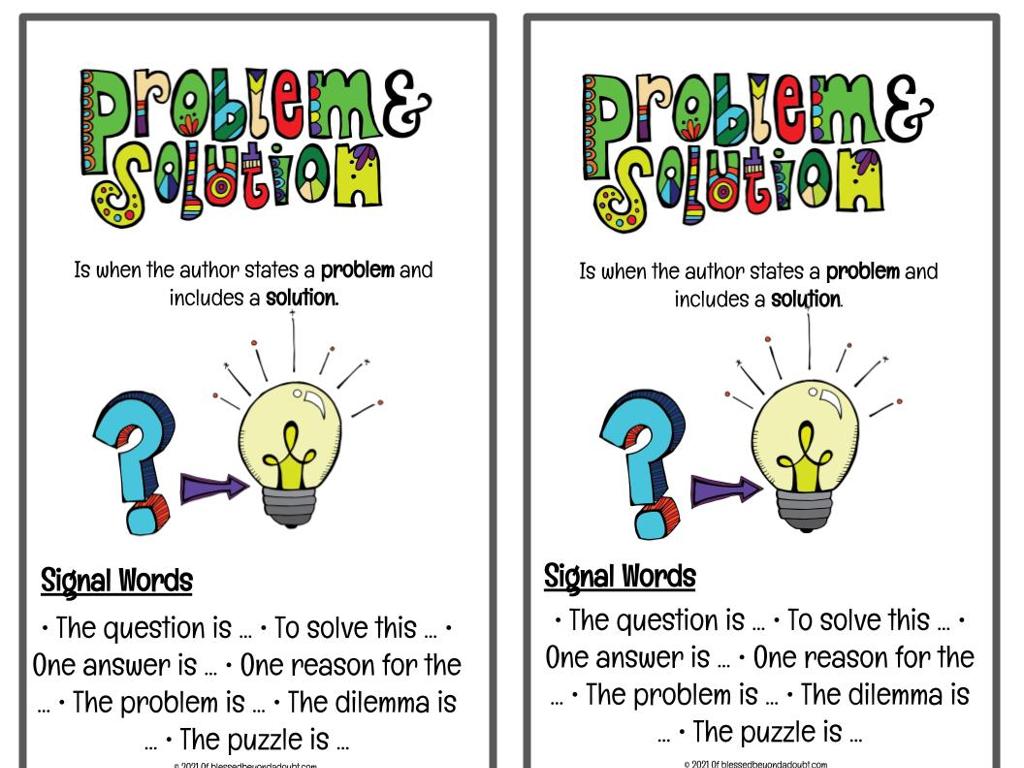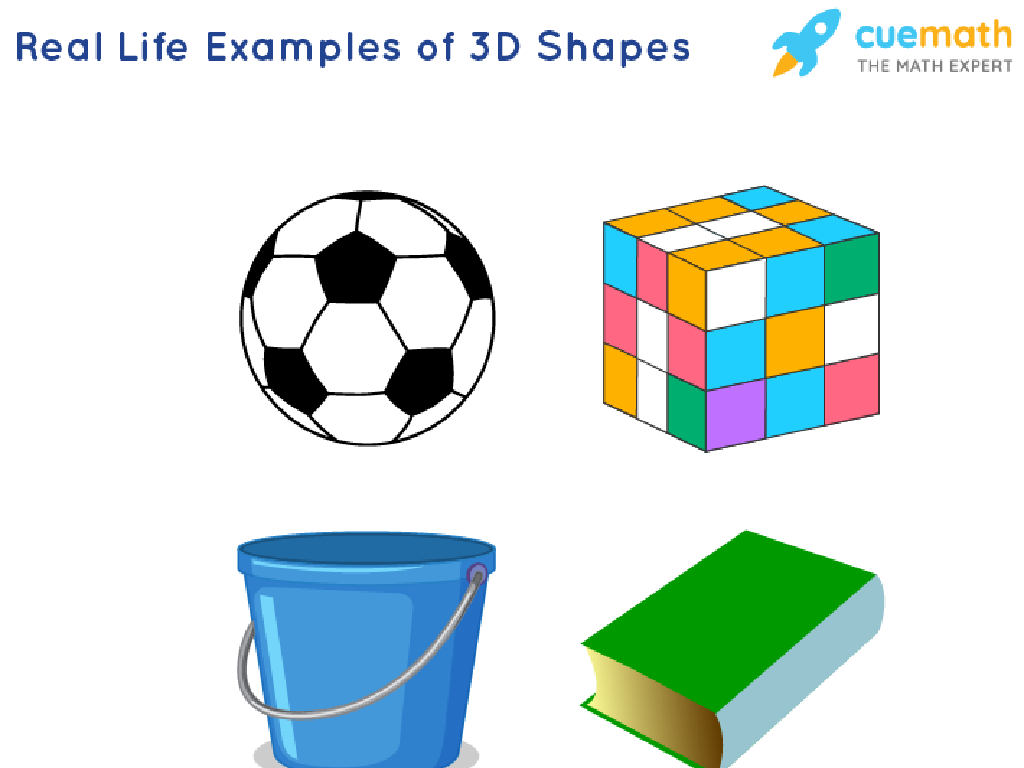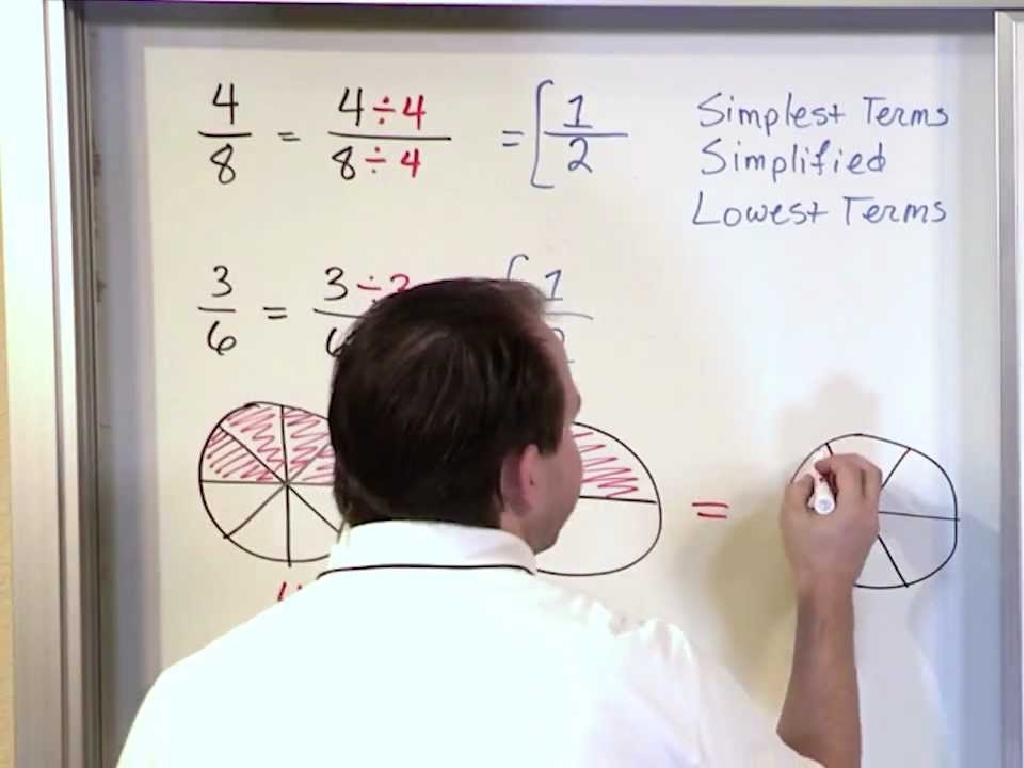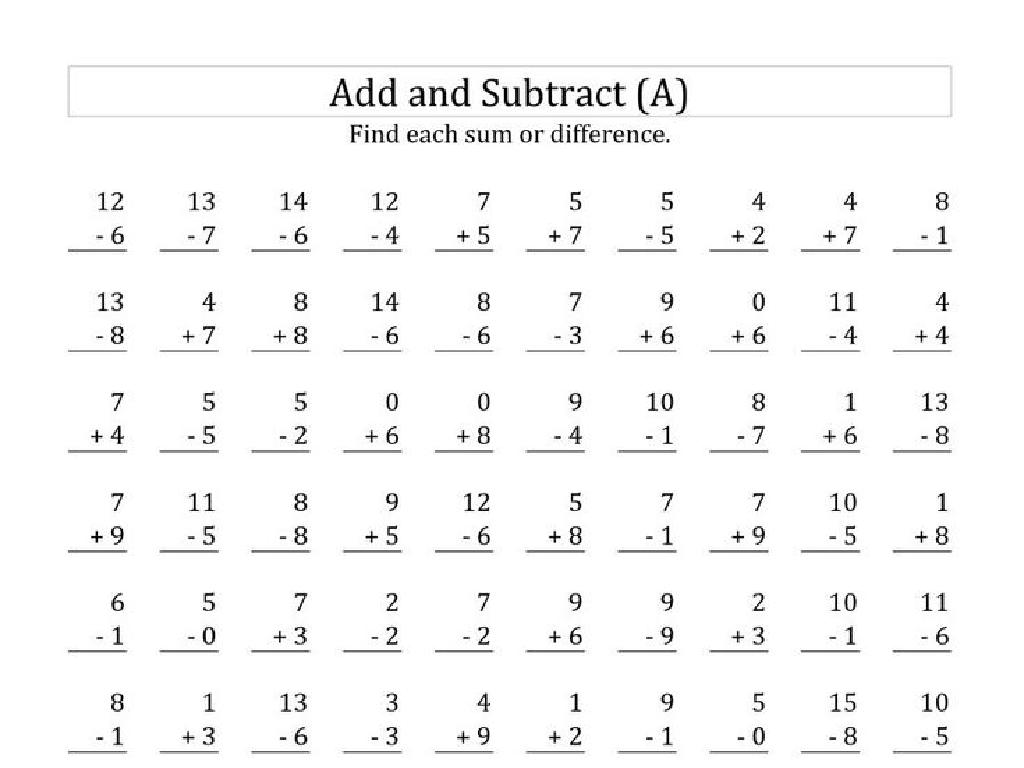Complete The Word With The Ending That You Hear
Subject: Language arts
Grade: Second grade
Topic: Prefixes And Suffixes
Please LOG IN to download the presentation. Access is available to registered users only.
View More Content
Playing with Words: Prefixes and Suffixes
– Greet our Super Second Graders!
– Today’s fun: playing with words!
– Learn parts of words to improve reading
– Understanding prefixes, suffixes helps with new words
– Discover how prefixes and suffixes work
– Prefixes come before the root word, suffixes after
|
This slide is designed to introduce second graders to the concept of prefixes and suffixes in a fun and engaging way. Emphasize the importance of understanding the different parts of words to enhance their reading and writing skills. Explain that prefixes are added to the beginning of a word to change its meaning, while suffixes are added to the end. Use examples like ‘un-‘ in ‘unhappy’ or ‘-ful’ in ‘joyful’ to illustrate the concept. Encourage the students to think of words they already know and how they might change with different prefixes or suffixes.
Exploring Prefixes
– Prefix: Letters before a word
– Prefixes change a word’s meaning
– Example: ‘un-‘ means not
– ‘unhappy’ means not happy
– Example: ‘re-‘ means again
– ‘redo’ means to do again
|
This slide introduces the concept of prefixes to second-grade students. A prefix is a set of letters that we add to the beginning of a word to change its meaning. For example, adding ‘un-‘ to ‘happy’ changes the meaning to ‘not happy.’ Similarly, ‘re-‘ added to ‘do’ changes the meaning to ‘do again.’ It’s important to show students how prefixes alter the meaning of base words and to provide them with several examples to illustrate this point. Encourage students to think of other words they know that have these prefixes, and ask them to share their examples with the class.
Exploring Suffixes: Word Endings
– What is a suffix?
– A suffix is a letter group added to a word’s end.
– Suffixes modify meanings
– They can change a word’s use or its meaning.
– Examples: ‘-ful’, ‘-ly’
– ‘joyful’ means full of joy, ‘quickly’ means in a quick manner.
– Practice with suffixes
|
This slide introduces the concept of suffixes to second-grade students. A suffix is a set of letters that goes at the end of a word to change its meaning or its grammatical function. For example, adding ‘-ful’ to ‘joy’ turns it into ‘joyful’, which describes something full of joy. Similarly, ‘-ly’ can turn an adjective into an adverb, as in ‘quick’ becoming ‘quickly’, to describe doing something in a quick way. Encourage students to think of words they know and discuss how adding different suffixes can change their meanings. Plan a simple activity where students can practice adding suffixes to base words to reinforce the lesson.
Let’s Practice Prefixes!
– I’ll say a word, then a prefix
– Together we’ll make a new word
– Example: ‘happy’ + ‘un-‘ = ‘unhappy’
– ‘un-‘ before ‘happy’ takes away the happiness
– Now you try: ‘do’ + ‘re-‘ = ?
– What does ‘re-‘ mean when we add it to ‘do’?
|
This slide is designed to introduce the concept of prefixes to second-grade students. Start by explaining that a prefix is a group of letters we add to the beginning of a word to change its meaning. Demonstrate with the example provided, showing how ‘un-‘ changes the meaning of ‘happy’ to its opposite. Then, prompt the students with the word ‘do’ and the prefix ‘re-‘ and ask them to combine them to form a new word. Encourage the students to think about what ‘re-‘ could mean as a prefix. Possible activities include having students come up to the board to write their answers, or pair them up to discuss what the new word could mean. The goal is to help students understand how prefixes alter the meanings of words and to begin recognizing them in their reading.
Let’s Practice Suffixes!
– I’ll say a word, then a suffix
– Together, we’ll make a new word
– Example: ‘joy’ + ‘-ful’ = ‘joyful’
– ‘joyful’ means full of joy
– Your turn: ‘quick’ + ‘-ly’ = ?
– Add ‘-ly’ to ‘quick’ to describe how something is done
|
This slide is designed to engage second-grade students in a fun and interactive way to practice suffixes. Start by explaining that a suffix is a group of letters added to the end of a word to change its meaning. Demonstrate with the example provided, showing how ‘joy’ becomes ‘joyful’, which means full of joy. Then, prompt the students with ‘quick’ and the suffix ‘-ly’, and encourage them to think about what the new word ‘quickly’ means. This activity helps students understand how suffixes alter the meaning of words and how they are used in sentences. Make sure to provide positive feedback and support as they learn to form new words with suffixes.
Suffix Fun: Complete the Word!
– Listen to the base word and ending sound
– Choose the correct suffix for the word
– Example: ‘hope’ + ‘less’ = ‘hopeless’
– When I say ‘care’ and ‘ful’, you write ‘careful’
– Practice makes perfect
– Try with different words and suffixes at home
|
This slide introduces the concept of suffixes to second graders in a fun and interactive way. The activity is designed to help students understand how suffixes change the meaning of base words and how they can listen for the ending sounds to complete words correctly. The example provided will guide them in understanding the task. Encourage students to listen carefully to the sounds and think about how the word changes with the suffix. During the activity, say words aloud and give them time to choose the right suffix. After the activity, ask students to share their answers and provide feedback. For homework, suggest that they practice with their own base words and suffixes to reinforce the lesson.
Class Activity: Word Creators
– Pair up and create new words
– Use word cards for matching
– Match given prefixes and suffixes with base words on cards
– Combine prefixes and suffixes
– Understand how prefixes and suffixes change word meanings
– Share your creative words
|
This activity is designed to help students understand how prefixes and suffixes can alter the meaning of base words and create new words. Students should work in pairs to encourage collaboration. Provide them with word cards that have a mix of base words, prefixes, and suffixes. Guide them to match prefixes and suffixes with base words to form new words. Encourage creativity and exploration of word meanings. After the activity, ask each pair to share their most creative word with the class and explain the meaning. This will help reinforce their understanding of the concept and allow them to practice their speaking skills. Possible variations of the activity could include using a timer to make it a fast-paced game, or having students draw their new words in a creative way.
Fantastic Work with Prefixes and Suffixes!
– Excellent effort today, class!
– Prefixes and suffixes expand words
– Prefixes/suffixes are word parts added to base words
– Practice makes perfect
– Keep playing with words to get better
– You’re becoming word wizards!
– Soon, you’ll master new words easily
|
This slide is meant to conclude the lesson on prefixes and suffixes, providing positive reinforcement and encouragement for continued practice. Emphasize the importance of prefixes and suffixes in understanding and creating new words. Encourage the students to keep practicing by reading and writing, and to look out for these word parts in their daily lives. Remind them that learning is a process, and with time and effort, they will become proficient in using prefixes and suffixes to build and understand new words. Celebrate their progress so far and build excitement for their journey to becoming ‘word wizards’.

